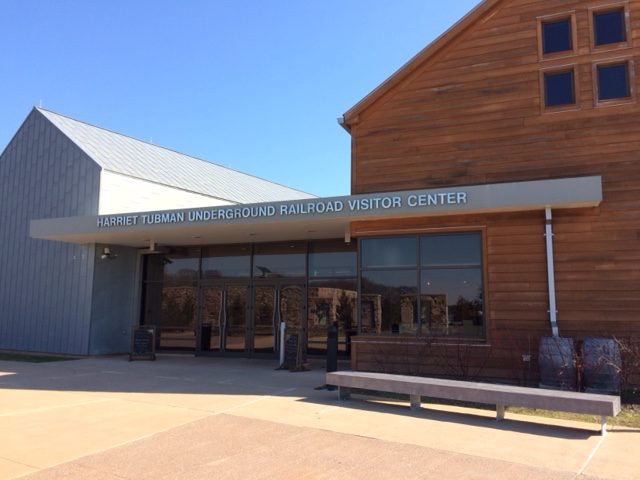History enthusiasts who want to better understand the life of Harriet Tubman by visiting her residences or areas where she lived, have two opportunities: Cambridge, Maryland and Auburn, New York. Since the two locations are 400 miles apart, they will need to be visited on two separate trips.
One option for visitors is to experience the recently-completed Harriet Tubman Underground Railroad Visitor Center in Dorchester County, Maryland where Tubman lived during the early years of her life and where she conducted most of her efforts to free enslaved people. The new visitor center is architecturally stunning, set amid Dorchester’s wetlands and waterways that were in use by the County’s inhabitants since the early nineteenth-century.
Within the center are numerous interactive and multi-media exhibits that accurately and compellingly report on Tubman’s life. Regardless of the age or interests of the visitor, all will find engaging exhibits that inform and inspire. As attractive as the exhibits are in telling the Tubman story, the center’s architects have designed the building so that the exterior surroundings, seen through large, plate-glass windows, are always visible, giving the exhibits continuing topographical context. The content for the exhibits and displays came from or was approved by the most preeminent Tubman biographers and scholars in the United States.
Those who wish to continue their exploration can take the 125-mile drive through Dorchester and Caroline Counties, Maryland into Delaware. Over two-dozen historic sites are found along this “Harriet Tubman Underground Railroad Byway.”
Auburn, New York offers a perspective primarily of Tubman’s post-Civil War life. Visitors here will see the house given to her by William H. Seward, a governor of New York, Senator from that state and later Secretary of State during and immediately following the Civil War. (Visitors can also visit Seward’s home on a nearby street.) Near Tubman’s house is also a building used to house indigent, elderly African-Americans in the early twentieth-century. (Tubman played a key role in founding this home for indigent, elderly residents.) A museum on the grounds of these buildings offers visitors a complete, if visually modest, account of Tubman’s life. The noteworthy aspect of the Auburn site are the excellent guides who are knowledgeable and enthusiastic in telling the Tubman narrative.
The Harriet Tubman Underground Railroad Visitor Center is managed by the National Park Service and the Maryland Park Service and is located 11 miles south of Cambridge, Maryland. The Auburn, New York site is operated as a National Historical Park. Both sites are situated in areas that have undergone minimum development over the years. Visitors to both will see landscapes and some buildings that are largely unchanged since Tubman’s time.

Recent Comments